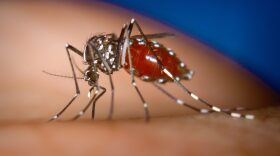Research at the University of Hawaiʻi at Mānoa shows that damage caused by the 2011 Tōhoku earthquake and tsunami in Japan was magnified by debris.
Located in the middle of the Ring of Fire, Hawaiʻi must consider coastal disasters during construction planning. Large debris such as cars and shipping containers create more damage to buildings — increasing repair costs.
"As [an] engineer, there are two ways to reduce the debris damage. One is to use the conservative design code, so make sure that the structure is strong enough," said assistant professor Hyoungsu Park.
"The other way is to install additional obstacle structures nearby the target building to avoid the direct collision to the building, and/or decrease debris speed," Park said.
A four-year $356,642 grant from the National Science Foundation will support the UH Mānoa’s Department of Civil and Environmental Engineering’s research on tsunami debris resilience. The research will be conducted at the Natural Hazards Engineering Research Infrastructure facility at Oregon State University.




